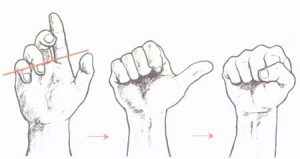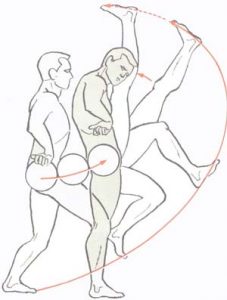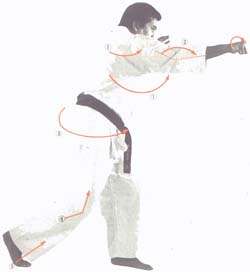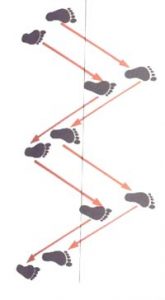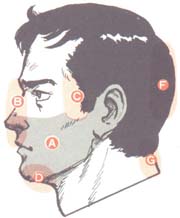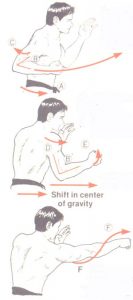Technique – Ashihara Karate International – Kaicho Hoosain Narker Sabaki Fighting Karate
| Why the Need for Basics? By practising basics, we mean practising punches, blocks, kicks from the basic stances -the pigeon toe stance, the natural stance, the front-leaning stance, the horseback stance and the heels together stance. Such training is the traditional way yet recently, for some strange reason, many people has started to view it lightly. Some has jumped to the conclusion that Ashihara Karate is an opponent of traditional karate, because Kancho Ashihara had rethought traditional karate kata’s and developed the Ashihara Control Technique Kata, but this is not true. What he has done rather was to modernise karate kata, something he deemed essential to meet the needs of modern street fights. Traditional basic karate is in no way obsolete. It is an ideal way of training ones body to the limit of its efficiency. Those who seek to denigrate it, obviously don’t understand what karate is all about. Understand your body Taking the punch for example, through basic training we seek to attain stability in the lower body, sufficient twist in the hips and a sharp penetrating strike. In a fight, footwork(in step) is essential in order to add speed and power to your punch and yet the step is often used to cover the fact that the punch itself lacks real power. If we say the force of the punch is a six and that of the step four, the two combined may give you ten. But if you don’t develop the punch itself to a force of ten in speed and power through basic training, and then add to it the four of the step – which will give you fourteen – you aren’t going to be able to cope in a fight. In the case of blocks, basic training is devoted to develop explosive power necessary to successfully repel your opponent’s attack. In basic training, power is concentrated into that moment of impact. In a real fight, it is best to think of blocking as the ability to gently switch the direction of an opponents momentum and so throw him off balance. However, if your hand lacks speed and power at the moment it makes contact, with the opponents technique, you will just be leaving yourself open to him. At that moment of contact, whether hand to hand or foot to foot, if your strength does not exceed that of your opponent, you are going to be pushed back. It is crucial that you develop that explosive power. Those who say basics don’t have any practical use, don’t understand their purpose. For each and every technique there is a suitable application. It is useless to ignore this and try to apply all blocks against all types of attack. For example, if you try to block your opponent’s right punch with a left inside block, you will finish up with your mouth on the end of his follow up left punch. You should also bear in mind that to spend all your time learning kata during basic training, will be a waste of time. It is only by understanding the reasons for doing basic training that those basics will be of benefit to you in a real fight. You can learn a lot by practising the basics.  The illustration on the right show a middle straight punch as practised during basic training: a right followed by the left. Power is concentrated in the fist by twisting the knees, hips and shoulder and the explosive extension of the arm from the elbow. You create a build-up of energy through the twist in the hips and by pulling the fist right back, which bursts at the moment of impact as your hips twist back again. The illustration on the right show a middle straight punch as practised during basic training: a right followed by the left. Power is concentrated in the fist by twisting the knees, hips and shoulder and the explosive extension of the arm from the elbow. You create a build-up of energy through the twist in the hips and by pulling the fist right back, which bursts at the moment of impact as your hips twist back again. The power of the technique originates from the twist of the hips with the spine as the axis. The ability to make the twist smoothly and sharply in a split second is what determines whether or not your blow will “cut” in a real fight. The photograph shows a back roundhouse kick, the power and speed of this technique also coming from the twist of the hips with the spine as the axis. If you don’t master this twist in basic training, when you try to do the technique in a real fight, your pivot leg will be shaky and you kick will lack balance and power. Learn thoroughly one by one each of the techniques in the syllabus and you will progress quickly. Further more, if you master the basics properly as a beginner, when you encounter a difficult patch at a more advance level, by referring back to your knowledge of basic movement, you will be able to trace the course of your problem easily. Recovery of a slump is faster for those who work hard at their basics -That recovery being a definite step up on the ladder or progress. By contrast, slumps for those who don’t work at basics will linger on. Like someone lost in a maze, they wont be able to work out why their opponent can read their technique so easily, or why they cant fell their opponent. Some will leave karate for good.  Twist pivot legs and hips, stretching the hip joint. Turn the upper body leading with the elbow. The body turn with the spine as axis creates power. It is difficult to correct a bad habit just by being told by someone else. The key is to figure out where the bad points lie yourself. Practice of basics acts as a searchlight to help you hunt out the bad points; it is a mirror that will show up your problems. Without basics, your ability to apply your knowledge in a real situation will never develop. Without basics you cannot progress. Twist pivot legs and hips, stretching the hip joint. Turn the upper body leading with the elbow. The body turn with the spine as axis creates power. It is difficult to correct a bad habit just by being told by someone else. The key is to figure out where the bad points lie yourself. Practice of basics acts as a searchlight to help you hunt out the bad points; it is a mirror that will show up your problems. Without basics, your ability to apply your knowledge in a real situation will never develop. Without basics you cannot progress. |

